-
Car Reviews
- All reviews
- Midsize SUVs
- Small cars
- Utes
- Small SUVs
- Large SUVs
- Large cars
- Sports SUVs
- Sports cars
- Vans
Latest reviews
- Car News
-
Car Comparisons
Latest comparisons
- Chasing Deals
A racing-derived 552kW V8 slotted into a carbon-composite coupe weighing under 1400kg is every bit as unforgettable as you might suspect
Through luck or good judgment, I spent quite a lot of time in the 2017 McLaren 720S and the extended one-on-one enabled a full consideration of everything the mighty supercar offered, as well as plenty of thoughts to reflect on afterwards.
It did a lot right including surprisingly tractive low-speed manners and comfort in addition to the perhaps less surprising monstrous performance. It also suffered some unavoidable traits typical to mid-engined, visceral two-door coupes such as a terrible towing capacity, dreadful off-road ability and a maximum occupant capacity of two.
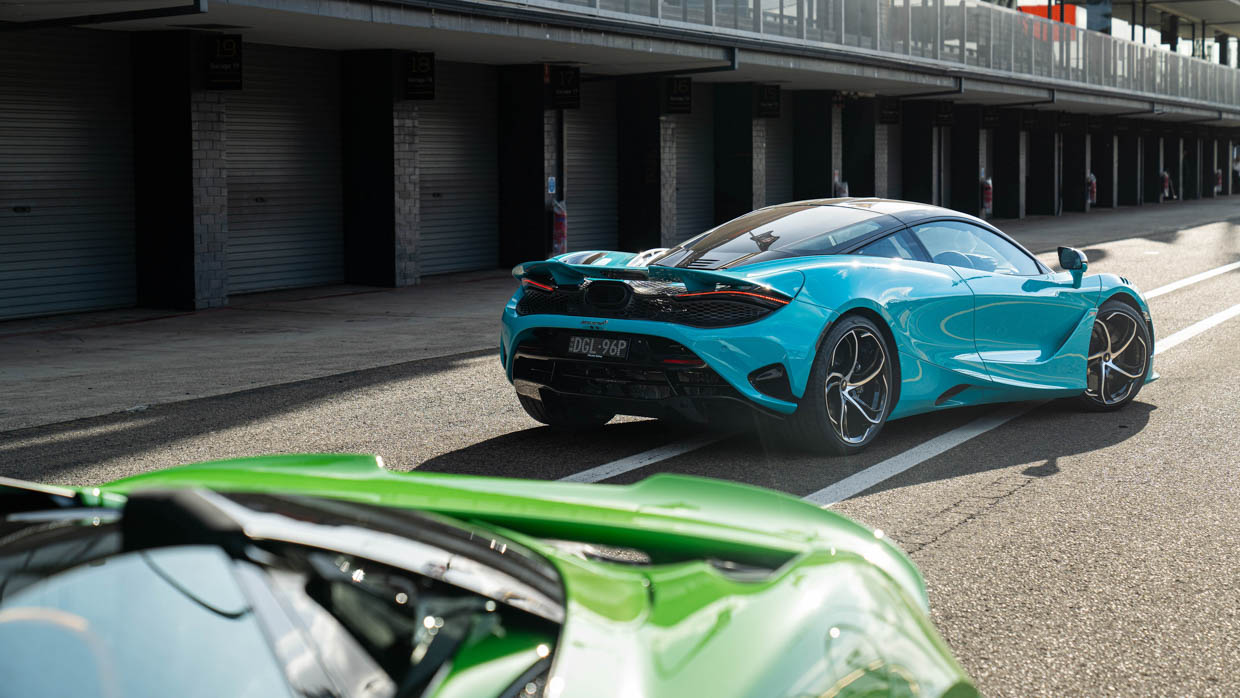
But of all the compromises, I didn’t once think the 720S was a bit slow. McLaren, it appears, does not agree and went ahead and produced another of its iconic ‘long-tail’ models dubbed the 765LT … and now this.
It’s called the 750S and, compared with the 720S, it’s faster, lighter, has more downforce and hits a track even harder, says its maker. Despite all this, McLaren claims it’s still just as placid to drive on the road.

Exploring the latter claim will have to wait until a full on-road test but, in the meantime, we grabbed the keys to the 2024 McLaren 750S to see what this V8-powered fiend offers on track.
Like everything in the McLaren family (until the Artura came along), the 750S is powered by a version of the company’s M840T 4.0-litre twin-turbo flat-plane crank V8.
In this particular application, it makes a staggering 552kW and 800Nm pumped through a seven-speed dual-clutch transmission with shorter gearing to just the rear wheels.
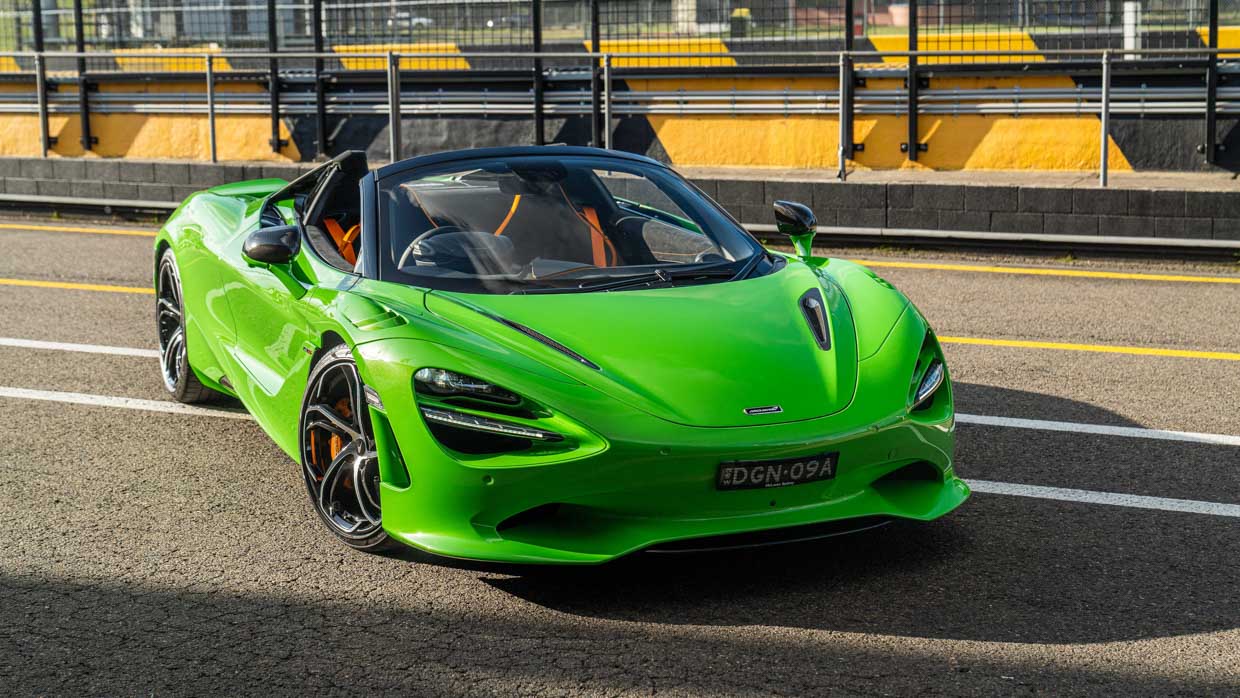
Also included in the price is McLaren’s wondrous Monocage II carbon-fibre cell which forms the core of the 750S but has extensive carbon componentry bolted to it. Somehow, McLaren found 30kg of unnecessary weight in the 720S and the 750S weighs just 1389kg kerb, resulting in the lightest series production McLaren to date.
At the front end, the 750S gets a revised look but retains an aesthetic familiarity, there are more changes at the back including honeycomb-punched aluminium grilles and a new centre-exit exhaust which has a specifically tuned soundtrack compared with anything else in the family.
The C-pillars now feature glazed panels boosting the view out of the cabin.
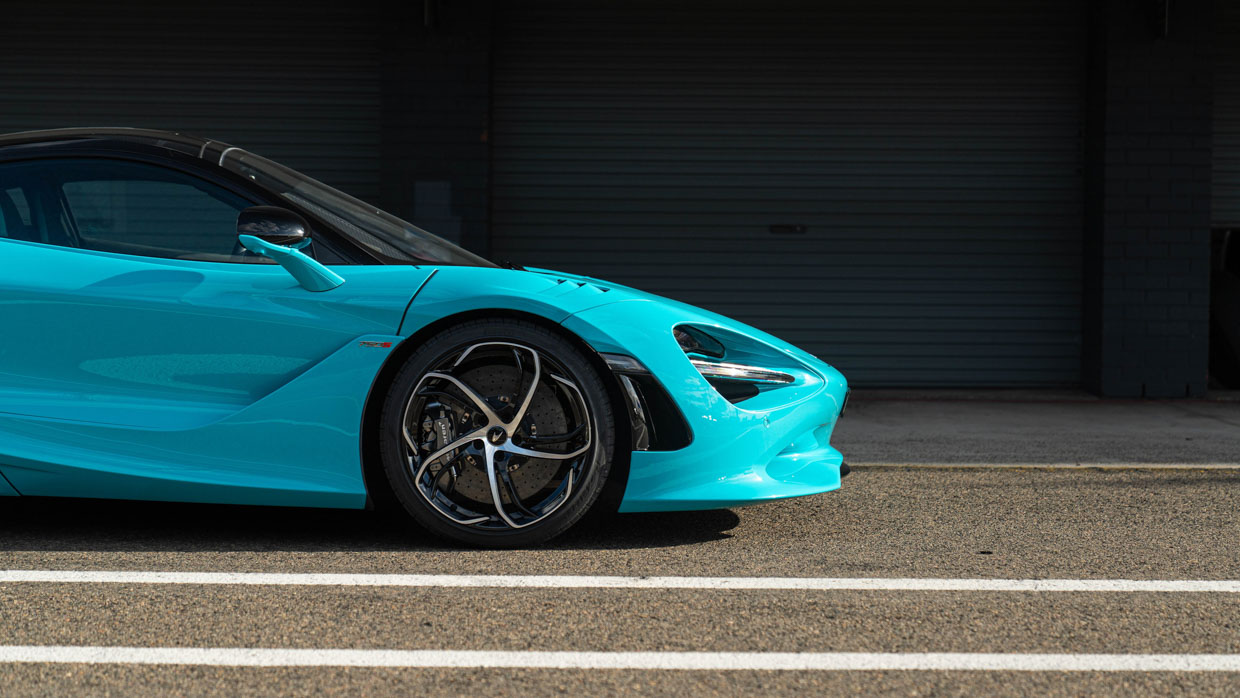
As before, the rear wheels are 20 inches in diameter with smaller 19-inch rims at the front but feature a new spiral design that suggests movement even when stationary.
While it may look similar, 30 percent of the 750S is different including a revised chassis that’s resulted in a 6.0mm wider track, faster electro-hydraulic steering and uprated springs and hydraulically linked dampers – there are still no anti-roll bars front or rear.
Inside, the changes are subtle including and upgraded 8.0-inch central screen that now has Apple CarPlay in addition to the existing Android Auto, while a combination of Nappa leather and Alcantara are offered in a predominantly black theme. The steering wheel is still commendably devoid of any buttons.
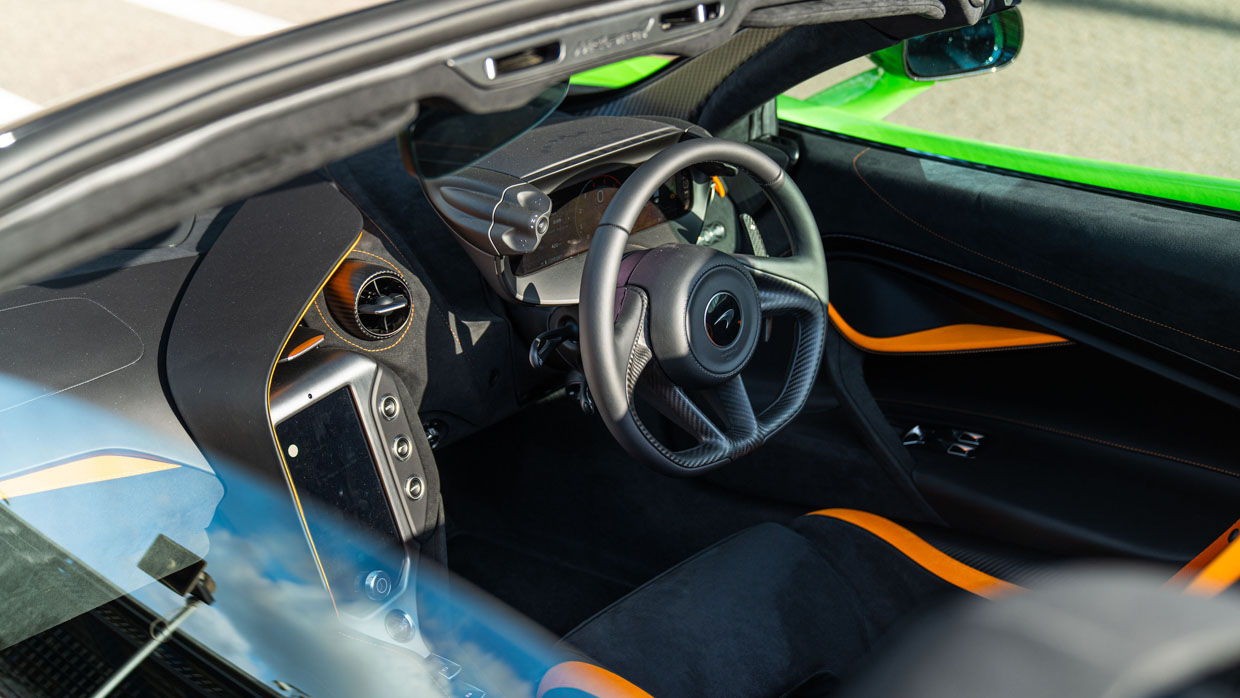
But no one buys a ‘standard’ McLaren of any model let alone the new Super Series and, like most pointy-end supercar makers, the British brand offers near limitless customisation from relatively simple colours and interior material choices, to something from its ultra-exclusive MSO Bespoke line. Either way, the starting price is $585,800.
More significant 750S options include the same braking system fitted to the mighty Senna, and a selection of aero options to make the 750S less subtle (or more ostentatious) including shark-gill style vents from the 765LT. You can also have an even lighter carbon-fibre seat which adjusts more like the Artura’s fixed-tub design.
Adding a targa-style roof with the Spider variant adds another $68,800 to the price which some might argue is not a lot more when you’re already nearly $600k deep to buy the coupe, but it’s easy to explain why that’s a bit steep.
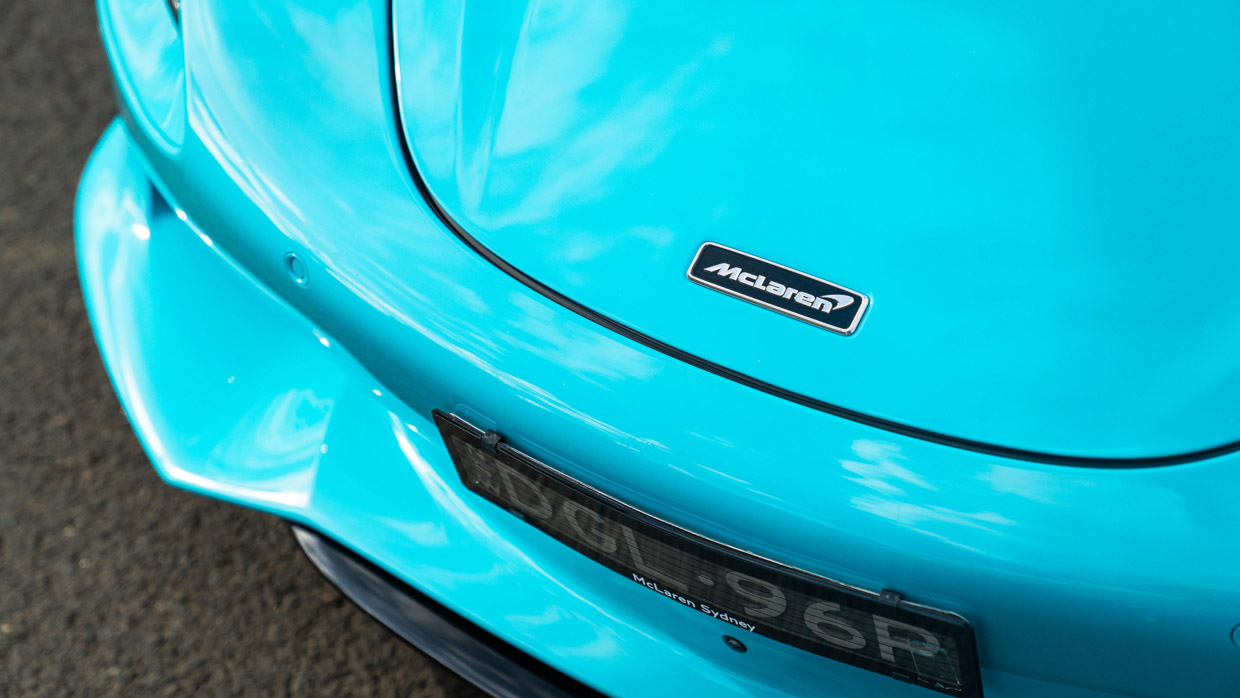
Upgrading a Porsche 911 Turbo S coupe to the Cabriolet, for example, costs another $20,000, which represents just 3.7 percent more than the coupe while the difference between top-off and top-on 750S variants is a hefty 12 percent.
That said, as you’ll see for our drive impressions, the convertible is a bit better value than a simple maths working can explain.
Boarding the 750S in the dying light of a Sydney spring day and puling the ultra-cool dihedral door closed brings a deep sense of excitement and trepidation. It feels familiar and comforting, but Sydney Motorsport Park is anything but, while the significant extra dose of performance McLaren says lies under the lurid green skin awaits discovery.
Thankfully someone else has already put some heat into the Pirelli P Zero Corsa tyres because the extra grunt combined with less weight becomes immediately obvious before we’re even on the track.
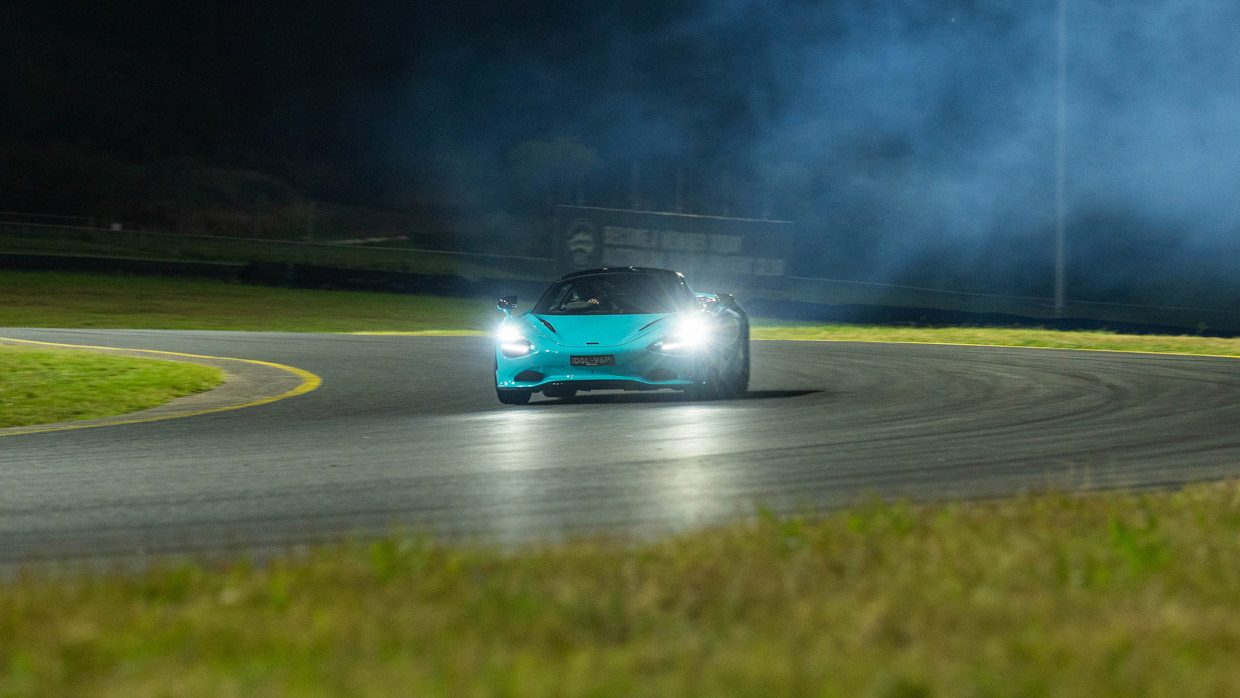
Even on the pit exit, the Mac is hunkering like a eager dog on the end of a lead and it feels as though I’m largely powerless to stop it.
A half lap passes before the confidence builds sufficiently to actually bury the throttle fully and there’s not even a suggestion of wheel spin as the 750 bolts with unbelievable urgency.
As surprising as the sheer acceleration is the sensitivity and precision of every single control. The faster steering ratio is so quick it takes a good five laps to recalibrate and stop giving the car wildly exaggerated instructions and the same goes for the accelerator which is blindingly responsive.
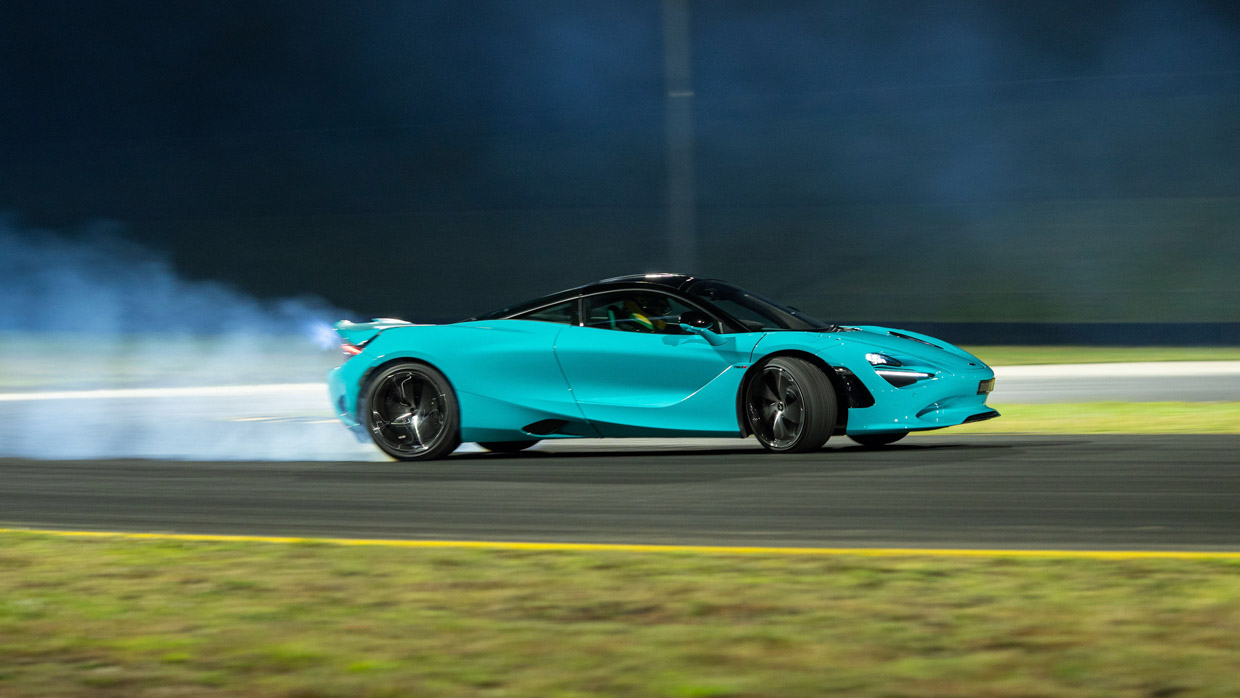
Get either wrong and the 750S will snap into a slide but it’s so predictable and progressive, I’ve got mental capacity in reserve to apologise to my minder in the passenger seat while applying opposite lock.
But with time, my inputs are tempered and the McLaren settles into a beautiful flow. It’s a wildly fast and vivid flow.
Even with ‘standard’ brakes speed is scrubbed with savage efficiency and composure, the brilliantly progressive pedal feel is ultra consistent and will even accept a bit of trail braking at speed thanks to some seriously effective aero and those clever connected dampers.

Like the perfect temperature of a room, there are plenty of things that you don’t notice because they’re just right.
The seats pin every body part that shouldn’t budge allowing all the bits that should free movement, the steering wheel has surely been moulded to my hands, while I don’t remember seeing any part of the bodywork from the cosy accommodation – despite the low position and snug cabin, the view out is excellent.
The 750S is cohesively as successful as the 720S with unique ergonomic design such as the uncluttered steering wheel, a relatively slender central touchscreen and a seat so organic it feels as though it grew around me into my favoured position as we were driving.

Some have criticised the sound McLaren’s flat-plane crank V8 makes – frankly they’re idiots.
It might not have the succulence of a cross-plane iron block something-or-other doing 6000 rpm but I challenge anyone to say the 750S note is dull when it’s screaming at you from its new exhaust system. It sounds very different to the 720S, by the way.
It might be exceptional in its power, telepathic steering and lithe body control but the McLaren 750S is not unique from a performance perspective. Ferrari offers the 296 GTS and GTB twins which manage similar power and performance figures, as well as a remarkable driving experience that leaves an unforgettable impression.
However, the McLaren indisputably excels in the lightweight stakes. With some extraordinary attention to mass reduction, the 750S has a kerb weight lighter than the 296’s dry weight and with a kerb weigh of just 1389kg, the 750S is the lightest series production McLaren to date – including the new ultra-mega W1.
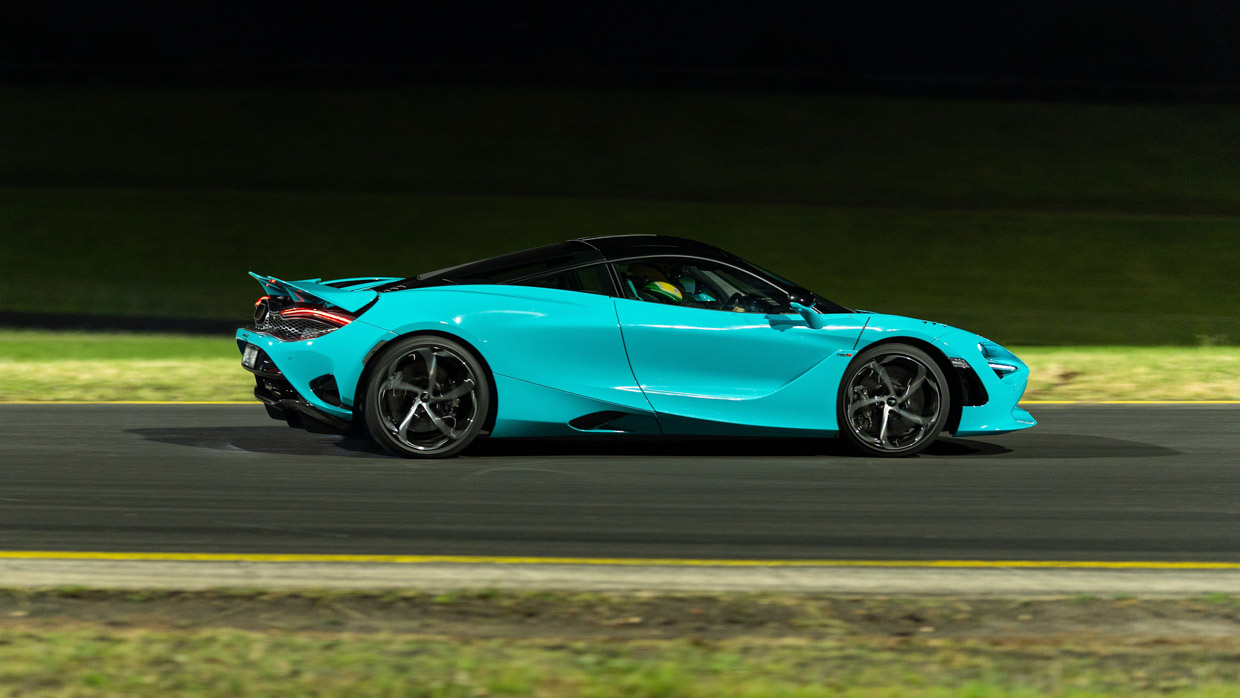
Despite the staggering engineering achievement, the 750S still has a bit of an appetite for tyres and with all that energy sent through just the rear wheels, it doesn’t take long to heat-cycle an expensive pair of rears no matter how little inertia the car carries.
Before we know it, two 15-minute sessions are over and the mental 750S returns to the pits with all the composure it left with and the driver (and possibly passenger) are the only ones showing mild signs of distress.
A half hour is only just enough to scratch the surface of the 750S but more than enough to know there’s a lot more to its extraordinary ability. As I hand back the keys, the initial consternation has evolved into an insatiable yearning for one more lap…
There are no sweeping changes to accompany the 750S compared with its predecessor which may sound a little disappointing until you consider that the 720S cabin was sensational in all the right ways.
Track day enthusiasts may prefer to opt for the coupe not because it offers something dynamically superior – there’s very little in it including just 30kg extra weight and indiscernible stiffness – but because the full width dihedral doors allow easier access when wearing a helmet.
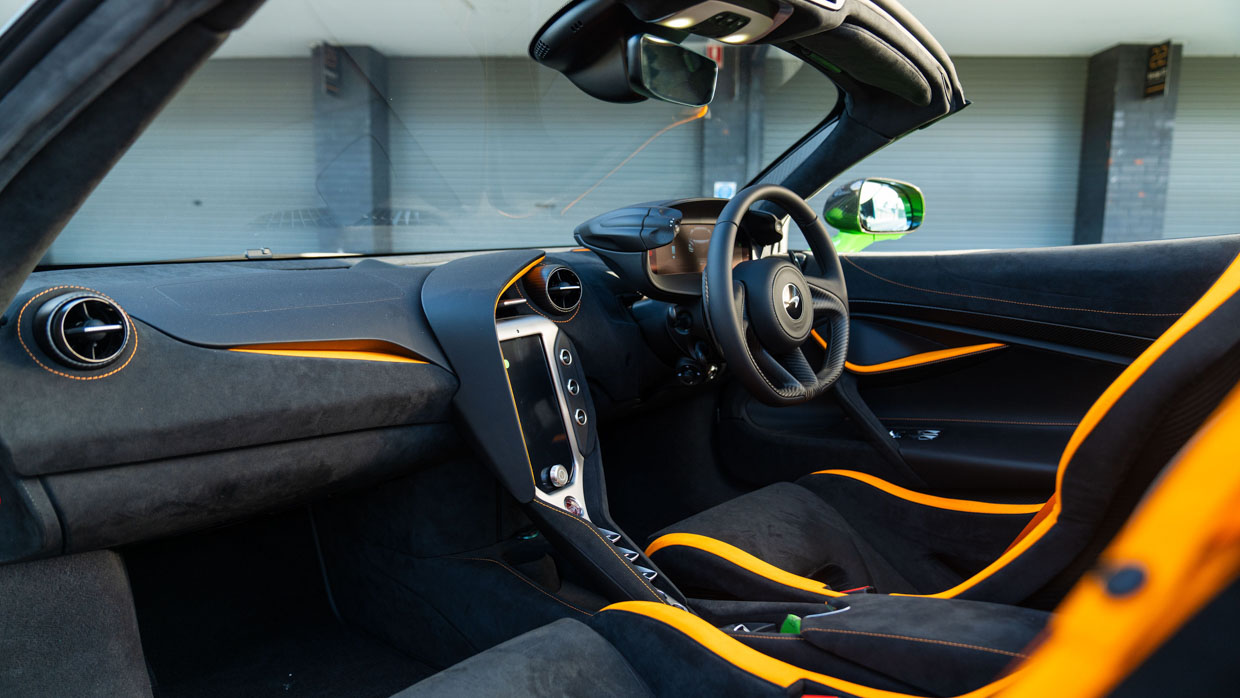
That said, there’s still ample headroom for a helmet in both variants even for a relatively tall driver and a little nod when boarding the Spider is all that’s required to avoid scratching precious airbrushed decoration.
The central information and entertainment system now supports both Android Auto and Apple CarPlay for smartphone mirroring while the operating system has been updated with a faster version although the model has not adopted the LAN-based electrical architecture of the Artura.
There are even a few clever places to stow things about the cabin but don’t expect to find a place to secure that 1.0-litre gym bottle.
We respect McLaren’s decision to leave the ostentatious and sensational to the outside design leaving the cabin to be a more restrained display of style and ergonomics – of course you can throw all that humbleness out of the window with the MSO range of limitless colours and materials if you choose – and are prepared to pay for it.
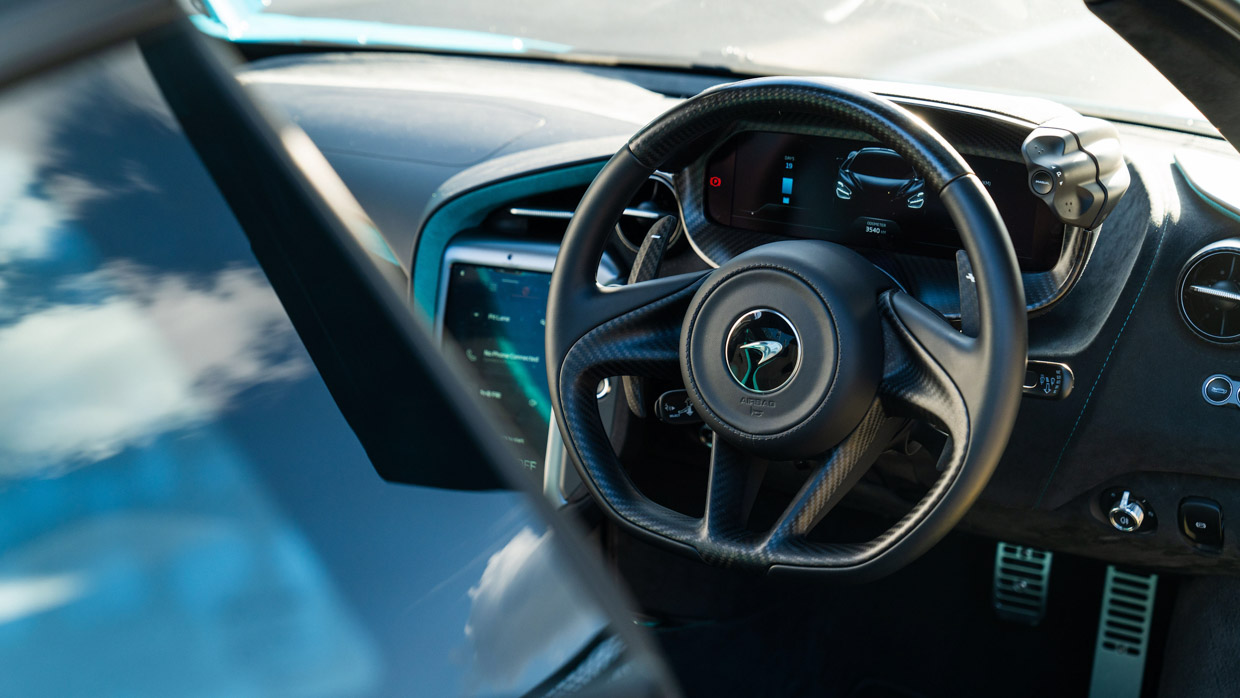
There’s still the ridiculously cool tumbling digital instrument cluster that rotates to just a skinny bar display when track mode is engaged and we love the general simplicity to the digital screens.
With 150 litres of space in the front luggage bin under the bonnet and another 210L behind the mid-mounted engine, the McLaren is not without some practical touches and doesn’t prohibit a weekend away for two with overnight bags.
Or perhaps a couple of helmet bags and your favourite thin-soled shoes and Nomex gloves.
The McLaren 750S is not a car you can simply slot yourself into, point it at a track and expect heroic lap times from the get go. In fact, it resides in a glorious (and at times frightening) category of supercars that allows you to make mistakes.
As I demonstrated on more than one occasion, a momentary lapse of concentration or talent and the McLaren gives you the opportunity to make an ass of yourself and there’s a sense that you could lose it in a big way if carelessness sneaks in.

But with time and patience, the 750S has a huge amount to be discovered and much to learn, and that will appeal to an owner who wants to invest in its extraordinary ability over time. It would take many laps of your favourite circuit to truly reveal its extreme pace, but it would be a wonderful journey getting there.
So think not of the 750S as an even more extreme version of the 720S because that car offers an incredible blend of road and track balance that leaves hardly anyone wanting for more. Instead think of it as a slightly pared back 765LT.
It is tangibly more savage and immediately quicker in a straight line as well as in the turns but until we get a chance to hit the public road we still don’t know if the 750S has traded the 720S mild manner in exchange for a bit more mongrel.
Key specs (as tested)
About Chasing cars
Chasing Cars reviews are 100% independent.
Because we are powered by Budget Direct Insurance, we don’t receive advertising or sales revenue from car manufacturers.
We’re truly independent – giving you Australia’s best car reviews.
The estimate provided does not take into account your personal circumstances but is intended to give a general indication of the cost of insurance, in order to obtain a complete quote, please visit www.budgetdirect.com.au. Estimate includes 15%^ online discount.
^Conditions Apply
Budget Direct Insurance arranged by Auto & General Services Pty Ltd ACN 003 617 909(AGS) AFSL 241 411, for and on behalf of the insurer, Auto & General Insurance Company Limited(ABN 42 111 586 353, AFSL 285 571).Because we don’t know your financial needs, we can’t advise you if this insurance will suit you. You should consider your needs and the Product Disclosure Statement before making a decision to buy insurance. Terms and conditions apply.
Indicative quote based on assumptions including postcode , 40 year old male with no offences, licence suspensions or claims in the last 5 years, a NCD Rating 1 and no younger drivers listed. White car, driven up to 10,000kms a year, unfinanced, with no modifications, factory options and/or non-standard accessories, private use only and garaged at night.
^Online Discounts Terms & Conditions
1. Discounts apply to the premium paid for a new Budget Direct Gold Comprehensive Car Insurance, Third Party Property Only or Third Party Property, Fire & Theft Insurance policy initiated online on or after 29 March 2017. Discounts do not apply to optional Roadside Assistance.
2. Discounts do not apply to any renewal offer of insurance.
3. Discounts only apply to the insurance portion of the premium. Discounts are applied before government charges, taxes, levies and fees, including instalment processing fees (as applicable). The full extent of discounts may therefore be impacted.
4. We reserve the right to change the offer without notice.